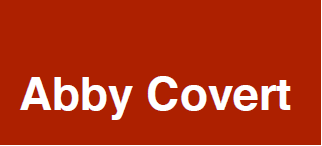Choose Your Words
This worksheet (PDF) is the closing exercise in Chapter 2 of How to Make Sense of Any Mess.
This exercise invites you to think about the way your user’s ideally perceive your work.
The words we choose matter. They represent the ideas we want to bring into the world. We need words so we can make plans. We need words to turn ideas into things.
Why is this Important?
These seemingly small choices about what we are making makes implicit choices about what we are then NOT making. Looking at both sides of this equation and making sure both are in line with your intention is the ultimate protection against haters, 2 star reviews and the reality that you cannot be all things to all people.
In How to Make Sense of Any Mess I wrote…
Language is the material of intent.
The words we choose change the things we make and how we think about them. Our words also change how other people make sense of our work.
In writing this book, my intent was to make it:
- Accessible
- Beginner-friendly
- Useful in a broad range of situations
As a result, I had to be comfortable with it not being these other things:
- Academic
- Expert-friendly
- Useful in specific situations
Now, I invite you to see how many of the bad reviews my book has on Amazon or Goodreads are related to the ideals I expressly stated I was NOT seeking to serve. “Not useful enough in specific situations” being the number one complaint. I wonder if it takes them to page 32 when I expressly tell them I didn’t write this book for them for them to throw it across the room, or if they give me a chance to finish before the 2 stars start flying around.
Do these reviews sting less to read? Honestly, no. I am soft and still adhering armor against the hatred one will encounter when putting work out there. Especially work that pushes to demystify the needlessly complicated.
BUT can I go to bed knowing I served the mission. Read my four and five star reviews (of which there are plenty) and you will meet my readers — the people who vigorously nod through their first read and report coming back to this book in moments where they need a gentle reminder of why they are doing this hard work.
This exercise allowed me to see the difference between the users I seek to serve and those I need to file into the “let it go” bunch. I suggest you do the same. My work is not everyone’s cup of tea. Yours won’t be either. That’s ok. Set your intention before the critiquing starts and you’ll be more able to maintain perspective as you work through the tough process of seeing your work through other people’s words.
When to use this…
- Anytime really, but especially at the beginning. That is the fastest time in the life of an idea. Best to pin down your intention early in your process.
Level Ups, Bonus Points, Brownie Points, Nerd Snipes
- Write your dream 1 star review for the thing you are making. This will force you to describe in detail the choices you will make in service of your intent that are the ones that will be the reason other users chose not to be satisfied.
- Group Project! This is a great exercise for a group to tackle together as part of a larger vision setting moment. Get together and brainstorm ideas or give this as homework to members of the group and convene to compare and contrast your visions, leading towards understanding gaps of alignment on the team.
